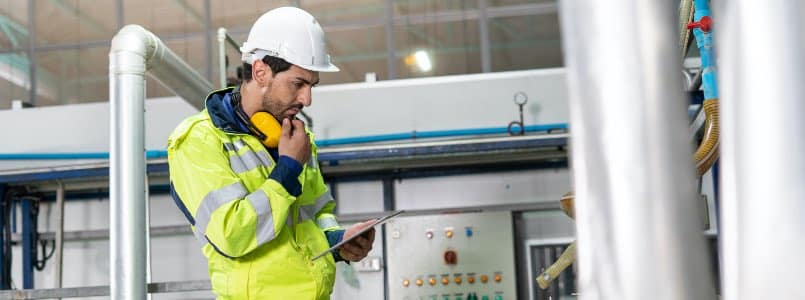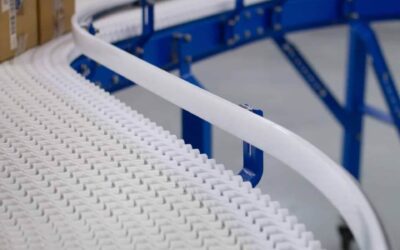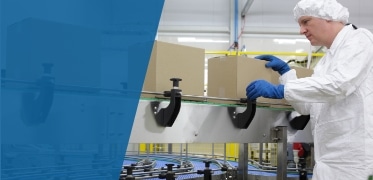
Food-Grade Conveyors & Food Processing
Food processing conveyor belts are helpful for various functions in the food and beverage industries. They ensure the swift and accurate delivery of items for further processing or packaging. For most industries, every food item must pass through the conveyor belt. This means it is easy to contaminate an entire production batch if the conveyor is not adequately clean.
The big concern then is, how do you effectively clean this equipment? Unfortunately, it is not so easy to clean conveyor belts. For most companies, their cleaning techniques do not produce optimal results every time.
Things To Consider Regarding Conveyor Belt Cleaning & Disinfection
There are various regulations concerning food processing conveyor belts. And the European Hygienic Engineering and Design Group (EHEDG) has guidelines for food conveyor belts as well. These regulations aim to ensure total food safety and hygiene. Your conveyor belt maintenance manual should also have some helpful information.
However, there are various things to keep in mind before opting for a standard cleaning method. The following can also help determine how frequently you should clean your conveyor belt.
- Belt Soiling. Soiling contributes to microbe growth. If the belt soil builds up fast, you will need to clean more often. Also, the longer the soil remains on the belt, the more difficult it is to clean. The contaminant will also spread to other conveyed items if left uncleaned.
- Material Volume. The material volume of the conveyor belt also determines how much cleaning it is going to need. Of course, there is higher contamination when the food-grade conveyor belt has a large material volume. If the belt is used heavily, then the cleaning should come more frequently.
- Processed Food. The type of food that goes on the belt is also essential. Note that sticky foods are more prone to carrybacks.
- Company Size. While small companies can use manual cleaning methods, it might be more difficult for bigger processing plants.
Cleaning and disinfecting food-grade conveyor systems is not only about hygiene. There are other mechanical advantages as well. Some early signs or markers that will indicate the extent of your conveyor cleaning needs include the following:
- Mistracking. One reason conveyor belts are effective is their alignment. But debris buildup on the track could cause misalignment. This can lead to the belt wearing out faster and might also affect the processing of some items as the alignment is disrupted.
- Material Spillage. Spills are common on inclined and horizontal troughed belts. But spills have the potential to pose a safety hazard if not cleaned up as soon as possible. Excess buildup can ruin the belt and increase food spills.
- Carrybacks. This is one of the most typical faults on conveyor belts. It happens when some materials remain stuck to the conveyor belt.
- Slippage. Buildup on the pulley of your conveyor could also reduce its efficiency. It can make the belt slip around the drive or pulley head.
Conveyor Belt Cleaning & Disinfecting Methods for Food-Grade Conveyor Systems
Conveyor systems, like easy clean food-grade conveyors, are designed and adapted for heavy washdowns. They make it possible to achieve optimal sanitation efficiently and safely. A new technology involves the use of an autonomous tensioner and provides more efficient and cleaner tensioning.
There are various conveyor belt cleaning methods. The level of contamination and type of food conveyor often determine the method used.
Manual Cleaning Methods
You can clean your food-grade conveyor belt using some manual methods. These include:
- Sweeping and brushing out the debris and carrybacks
- Scrapping sticky foods and food fragments
- Scrubbing stains along the belt
- Rinsing
- Wiping and vacuuming to dry and remove residue
Manual cleaning is labor-intensive and consumes a lot of time. Thus, it could delay production and reduce the company’s productivity. For these reasons, it might not be the best cleaning method. It is an affordable method, though. So, it could be effective for small food processing companies.
There is another limitation to manual cleaning, however. It might be impossible to reach some parts of the conveyor belt. In order to reach these inaccessible parts, you may need to fully dismantle the equipment, which is certainly not ideal.
Some of the tools you might require for manual cleaning include a water brush, brush cleaner, a roller and a wash box.
Semi-Automatic Cleaning Methods
Cleaning can be semi-automated. More extensive processing plants commonly undertake it. With this method, some parts of the cleaning process are automated while other operations are done manually. The automated aspects include dry vacuuming, spraying and rinsing. Brushing and scraping are manual operations in semi-automated cleaning.
Semi-automated cleaning is considerably faster than pure manual cleaning. It is, however, still laborious and time-consuming for larger processing plants. You could also need some of the materials mentioned in manual cleaning. This includes the cleaning brushes and wash box.
Fully Automatic Cleaning Methods
As you can see, there was a definite need to find a cleaning method for food processing conveyor belts — this ideal technique needed to reduce equipment downtime and be cost-effective. Automatic conveyor belt cleaning uses a mechanism called a clean-in-place (CIP) system. It is less laborious, ensures safety and reduces downtime.
Some belts use compressed air. This installation permits sustained airflow through the belt. It is an expensive method but quite effective. The return on investment (ROI) is quite reasonable as it drastically reduces spillage and ensures optimized production.
How To Clean A Belt with Dry Steam and CIP
For better results, you can combine dry steam with CIP to clean a food-grade conveyor. Dry steam has just 5% moisture content in superheated steam. This has a remarkable sanitizing effect that will rid your belt of oil, soil and other contaminants.
Using a CIP dry steam cleaner technique conserves a lot of water. Unlike the usually wet steam, dry steam saves you up to 98% water with a steam temperature of 290 °F. Therefore, there is no hiding place for microbes to go. The belt also dries almost immediately.
Upgrade Your Food-Grade Conveyor System Today with the Help of Span Tech
Food processing is a crucial subject in food safety and hygiene. Conveyor belts are central to this. It is imperative that you have the right cleaning equipment to prevent contamination of food items. Use Span Tech’s easy conveyor belt cleaning systems to keep your production line healthy and safe. Contact us today to learn more about implementing food-grade conveyor systems into your business today!











